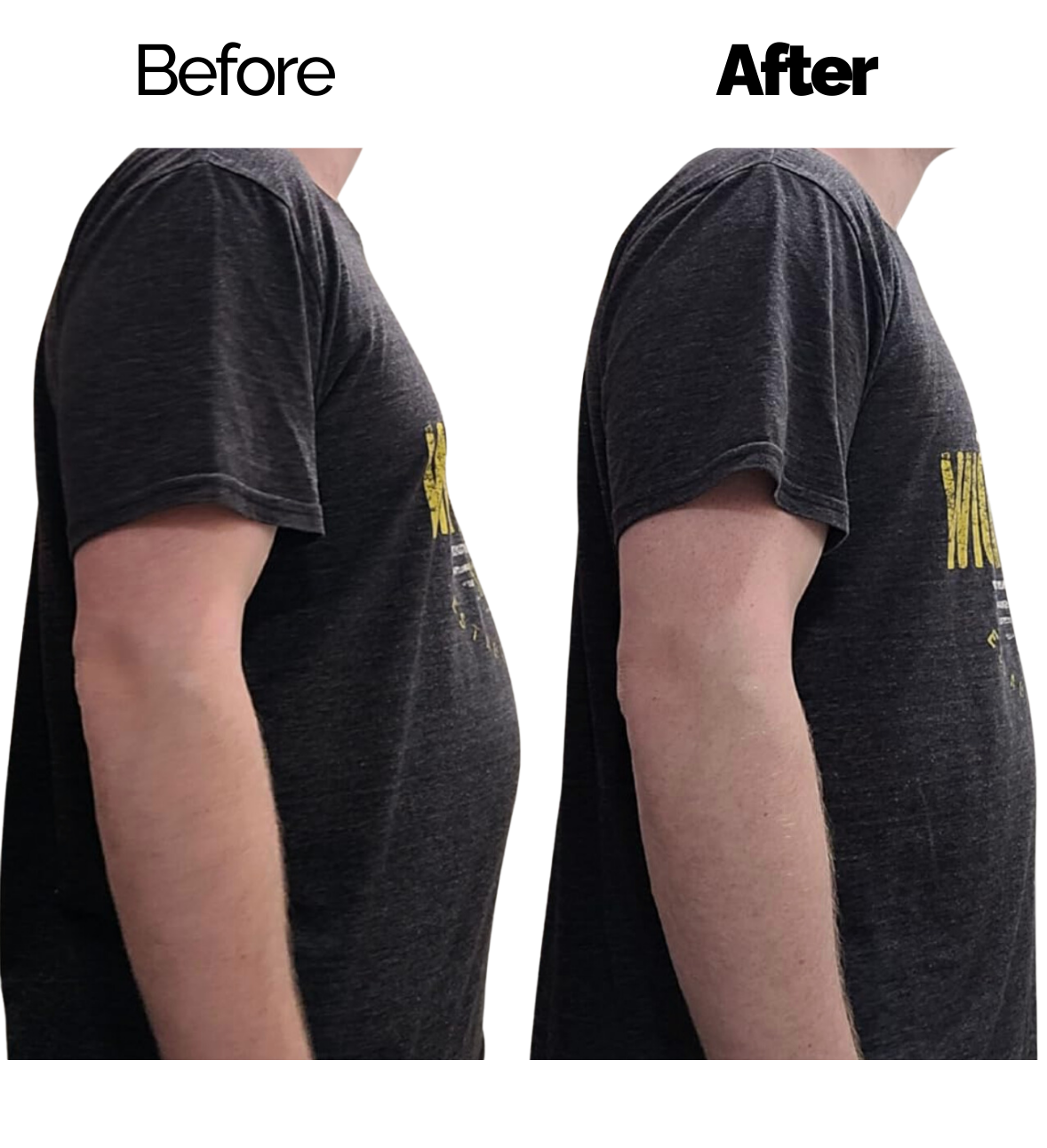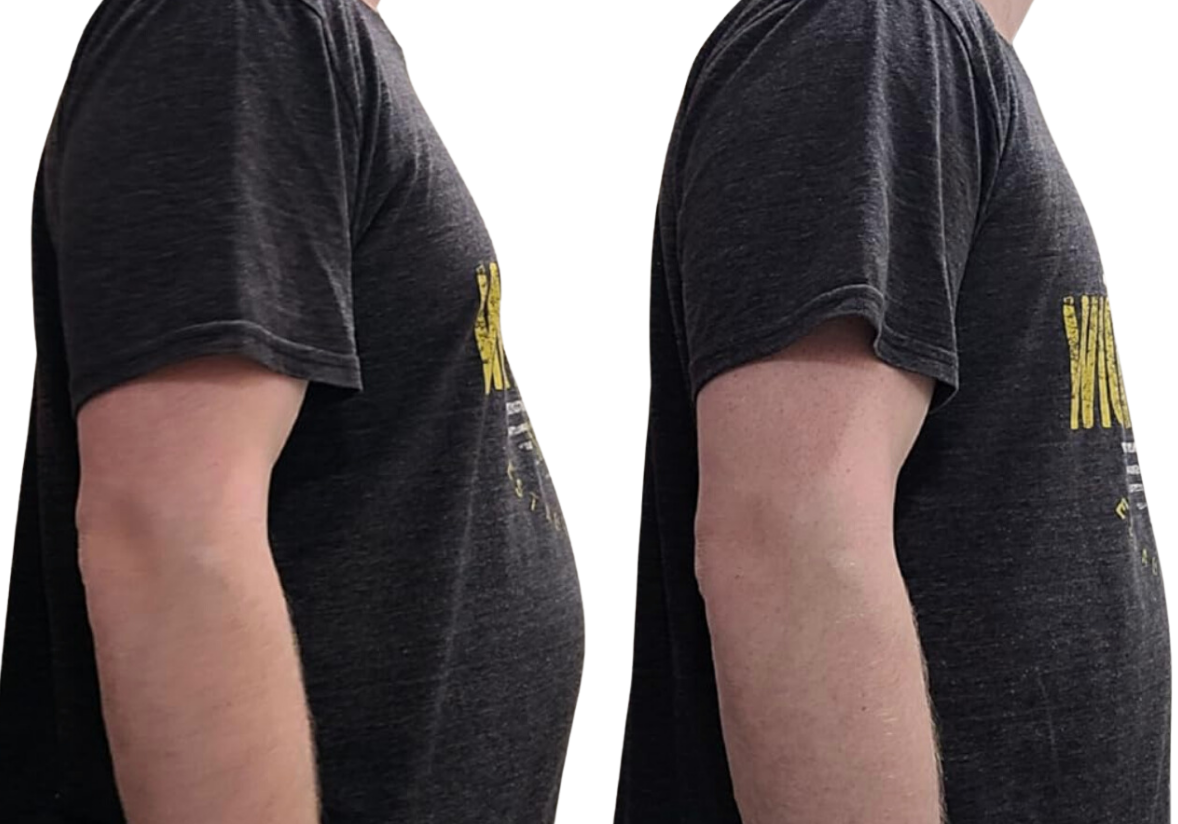For men, the growth of breast tissue called gynecomastia, can cause distress. This issue can bother those on testosterone therapy. But you can take action to stop gynecomastia while using testosterone. This guide will cover all you need to know. We'll look at what causes gynecomastia how it links to testosterone, and give you ways to prevent or treat it. You'll learn about helpful tips, lifestyle tweaks, food choices, workouts, drugs, supplements, and surgery options. By the time you finish reading, you'll know how to avoid gynecomastia during testosterone therapy.
Understanding Man Boobs and What Causes Them
Man boobs happen when breast tissue in guys gets bigger making it look like they have breasts. This happens because of hormone issues when there's more estrogen compared to testosterone. Man boobs can show up in males of any age, from babies to grown-ups, and a bunch of things can cause them. These include going through puberty, taking certain drugs, having some health problems, and even some lifestyle stuff.
When it comes to testosterone therapy, gynecomastia can happen because the body turns extra testosterone into estrogen. This change can throw off the balance between estrogen and testosterone, which might cause gynecomastia to develop. Keep in mind that not everyone on testosterone therapy will get gynecomastia, but it's a possible side effect you should know about.
Tips to Prevent Gynecomastia While on Testosterone Therapy
If you're on testosterone therapy or thinking about it, you can do a few things to lower your chances of getting gynecomastia. The most important thing is to team up with a doctor who knows a lot about hormone therapy. They'll keep an eye on your hormone levels and make changes if needed to stop gynecomastia from happening.
, you need to keep up a healthy way of life. This means working out often eating right, and not drinking too much alcohol. When you exercise , it can help balance your hormones and lower your chances of getting gynecomastia. Also, eating a good mix of foods with enough protein good fats, and lots of fruits and veggies can support your overall hormone health.
, you should know about any pills or supplements you're taking. Some of these can make you more likely to get gynecomastia. Talking to your doctor about what you're taking can help spot any risks and make changes if needed.
Lifestyle Changes to Reduce the Risk of Gynecomastia
Besides the tips we talked about earlier, you can make some changes to your daily routine to lower your chances of getting gynecomastia while on testosterone therapy. One of the best things you can do is keep your weight in check. Being overweight has a link to a higher risk of gynecomastia, so staying at a healthy weight can help you avoid it.
You might also want to cut down on stress. Long-term stress can throw your hormones off balance, which might lead to gynecomastia. To keep your hormones steady, you could try some ways to manage stress. Things like meditating, doing deep breathing exercises, and taking time to relax can all help.
Also, it can help to stay away from environmental estrogen-like compounds called xenoestrogens. You can find these in some plastics, pesticides, and other home products. To cut down on contact with these compounds, choose natural organic options when you can.
Dietary Considerations to Prevent Gynecomastia
What you eat plays a big part in preventing gynecomastia during testosterone therapy. Some food choices can help keep your hormones in check and lower your risk of gynecomastia.
To start with, you need to eat enough protein. Your body uses protein to make and control hormones. If you don't get enough protein, it can throw your hormones out of whack. To keep gynecomastia at bay, try to include lean proteins in your meals. Good choices are chicken, fish, eggs, and beans.
Also, don't forget about healthy fats. They play a big role in making hormones. To help keep your hormone levels where they should be and lower your chances of getting gynecomastia, eat foods rich in good fats. Think avocados, nuts, seeds, and olive oil.
, eat a wide range of fruits and vegetables. These foods contain antioxidants, which can lower inflammation and boost hormone health. Try to eat fruits and vegetables of different colors to get many helpful nutrients.
Exercise Routines to Prevent Gynecomastia
Working out keeps you healthy overall and can stop gynecomastia during testosterone therapy. Some exercises focus on chest muscles, which can make gynecomastia less noticeable.
Exercises that target chest muscles, like chest presses and push-ups, can build muscle in the chest. This gives a more manly look. Adding these exercises to your workouts can make gynecomastia less noticeable.
Besides chest exercises, doing cardio has benefits too. Cardio helps keep a healthy weight and cuts overall body fat. This can reduce how much gynecomastia shows.
Medications and Supplements to Prevent Gynecomastia
Sometimes, doctors give out meds or supplements to stop or treat man boobs when you're on testosterone therapy. One drug they often use is an aromatase inhibitor. This med blocks testosterone from turning into estrogen. Aromatase inhibitors can help keep your hormones in check and lower your chances of getting man boobs. Before you start any new med or supplement, it's crucial to talk to a doctor. They'll make sure it's safe and will work for you.
Also, some supplements might help to prevent gynecomastia. For instance, zinc has shown to regulate hormone levels and help maintain a healthy balance between testosterone and estrogen. Other supplements like vitamin D, fish oil, and DIM (diindolylmethane) might also be useful to keep hormones in check.
Surgical Options to Treat Gynecomastia
When gynecomastia happens during testosterone therapy and lifestyle changes don't reduce its appearance, you might need surgery. Doctors often use mastectomy to treat gynecomastia by taking out extra breast tissue. They might also use liposuction to remove chest fat. You should talk to a good plastic surgeon about the best surgery for you.
FAQs about Gynecomastia Prevention
Q: Can gynecomastia occur without testosterone therapy?
A: Yes, gynecomastia can happen to people who don't take testosterone therapy. Hormone imbalances, some medicines, health issues, and lifestyle choices can have an impact on its development.
Q: Are there any natural remedies to prevent gynecomastia?
A: While natural remedies might boost overall hormone health, they won't stop gynecomastia . It's crucial to talk to a doctor to get advice that fits your situation.
Q: Does gynecomastia last forever?
A: Gynecomastia can be short-term or long-lasting, based on what's causing it. Sometimes it goes away on its own, but other times, surgery might be needed to fix it.
Conclusion
Gynecomastia can upset men those on testosterone therapy. But you can take action to prevent or treat it by understanding its causes and following the advice in this guide. This includes tips, lifestyle tweaks, diet choices, workouts, and meds or supplements. Don't forget to talk to your doctor for advice that fits your needs. The right plan can help you keep your hormones in check and lower your chances of getting gynecomastia.


























